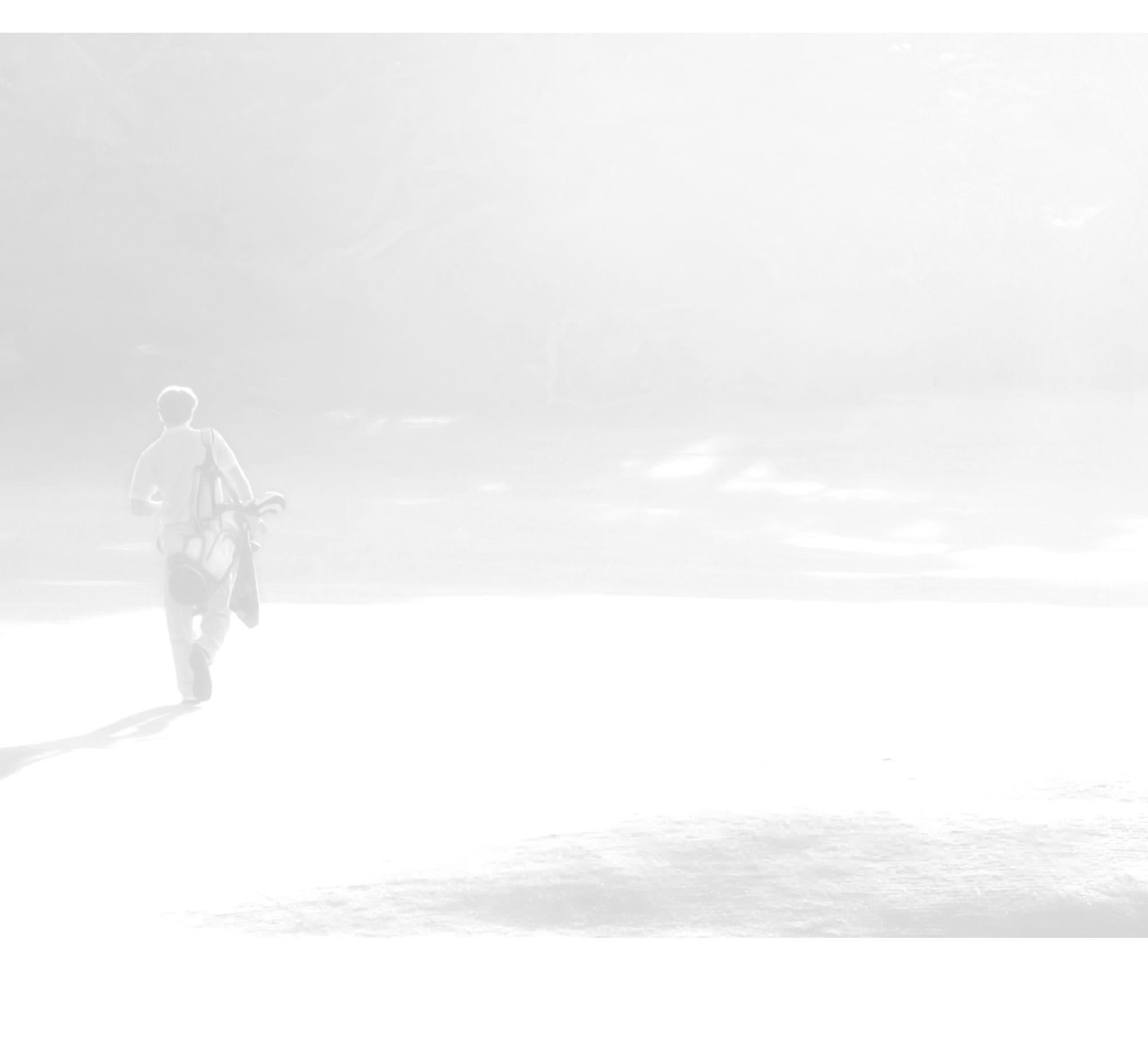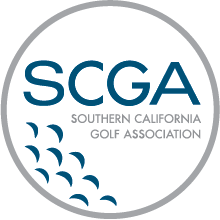SCGA History
Part 1: 1899-1919
SCGA History: Part 1
Chapter One -- First Stirrings
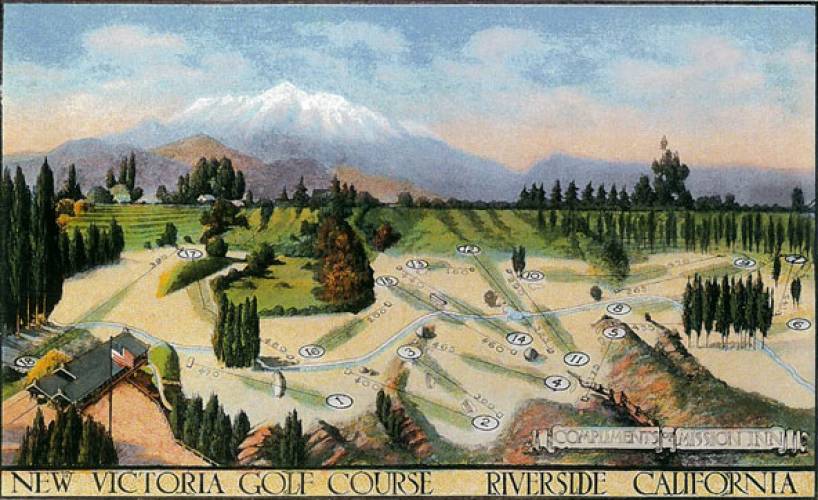
In concert with the rest of the nation, California was growing as well, from a population of 92,597 in 1850 to 1,311,564 by the turn of the century. One of the magic words in California's growth was railroads, which brought not only new settlers to the state but, perhaps equally important, vacationers. Transportation, real estate and vacationers fueled the growth of golf in Southern California as the 19th century was coming to a close, a triumvirate that hasn't changed in 100 years.
The great railroad war began in 1876 when the Southern Pacific line between San Francisco and Los Angeles was finished. Nine years later, the Atchison, Topeka & Santa Fe circumvented SP's attempts to maintain a California monopoly and completed its southern U.S. route through San Bernardino and Pasadena to Los Angeles. That set off a fare war between SP and Santa Fe; tickets from the East Coast, which had cost $125 fell to as low as $95 and those low prices brought thousands of new residents and vacationers to the region -- specifically, to what we now the Inland Empire, to Pasadena and to the beach resorts of San Diego and Santa Barbara.
There are sketchy reports of golf courses in various Southern California locales from Santa Barbara to Riverside (almost all of them resort areas or areas where colonies of English settlers grew up), but these were probably only a few holes each and cannot really qualify as courses. As Ralph W. Miller noted in his "History of Golf in Southern California" (which was printed in the first issue of FORE Magazine), there's a good reason no formal history of these early efforts is recorded. The idea wrote Miller, "of several persons hitting golf balls around a pasture would have no more interest than would a quiet game of croquet on the front lawn." That would shortly change.
Chapter Two -- The Founders
Riverside
It is to Redlands and Riverside that we look for the first formal golf courses in Southern California. Riverside was riding the crest of the agricultural wave that came from the introduction of oranges to the area. The first orange trees were planted in 1871 and a decade later there were more than half a million citrus trees in California, almost half of which were in Riverside. The navel orange was introduced to the United States in Riverside and, notes the city's web site, the development of refrigerated rail cars and innovative irrigation system made Riverside the wealthiest city per capita by 1895.
Considering that European settlers from the East Coast were instrumental in founding the city, it's no surprise that golf began to appear on the scene early on The Riverside Daily Press reported in 1891 that a group of people, including Charles E. Maud, laid out a four- or five-hole course near an area known as the "Orange Camp." No one knows for sure if that course actually existed, but Maud would later become the first president of the Southern California Golf Association.
More importantly, Joan Hall, in her history of The Victoria Club, relates that in January, 1893, eight men gathered in the meeting of a downtown hotel rented by the Riverside Country Club, where they listened to Henry Lockwood, a member who had recently played St. Andrews (NY). Subsequently, a nine-hole course was built on land near what is now the University of California at Riverside. Although nobody knows exactly where the course was and there is some dispute, this course -- known variously as Buena Vista, Box Springs and Riverside Golf Club -- may well have been the first golf course in Southern California.
And what a course it was -- about twice as long as 18-hole courses that were built later. The first hole, recounts Miller, was more than 600 yards long. "On one occasion, W.J. McIntyre took 37 strokes at his ball in a small bush 'without once losing his good form or uttering a profane word.'" Perhaps not surprisingly, the course was abandoned in 1896.
Another club was formed in 1893, called the Riverside Polo Club (again, with Maud as one of the founders). Three years later, golf was added to the agenda and the name was changed to the Riverside Polo & Golf Club. The severity of the course might be noted from the hole names: The Goal, The Grave, The Styx, Sudden Death, Hades and The Devil's Own. When the club moved to a new location in 1900, golf was abandoned and the club's golfing members were absorbed by the Pachappa Golf Club or the Rubidoux Golf Club.
Pachappa was a nine-hole course formed in 1898 and located about two miles from the center of town. Rubideaux was also a nine-hole course formed in April, 1899. Much of Riverside's elite were members or these three clubs, including men such as Philip Pedley and Robert Osburn who would be instrumental in founding the SCGA and, in 1903, The Victoria Club.
Redlands
Like Riverside, Redlands was enjoying a boom due to its prominence as an agricultural site and a tourist mecca. In "Redlands Country Club: A Centennial History," author Larry Burgess noted that "Redlands in 1897 enjoyed an enviable reputation as a Ômust see destination' for tourists from all across America who marveled at the private Stanley Heights botanical park, the beautiful mansions, the striking valley with its navel orange groves framed by the San Bernardino Mountains as the backdrop, and the badlands hills of San Timoteo Canyon to the south."
On November 21, 1896, 30 men met at the Casa Loma Hotel to create what would become the Redlands Country Club. The founders -- who had come to Redlands from New England, New York, Chicago and Scotland -- moved quickly and by the next year had leased land, built a course and constructed a clubhouse. The nine-hole course was 2,129 yards in length and today's course sits on that original land, making it the oldest club in Southern California -- and, indeed, one of the oldest courses in the United States -- still on its existing site.
Not everyone was thrilled with the course. Thomas H. Arnold, in his article "Golfing in the Far West," notes that "The course is not easy of access, and the lay of the ground, along the foot-hills is quite undesirable for golfing. Besides this, the course is badly laid out and is sadly in need of remodeling." Arnold was far more taken with the course at the Casa Loma Hotel in Redlands.
But RCC members were undaunted. The club was instrumental in the founding and early years of the SCGA, George Lawson became the club's first professional in 1901, and one of its members, Katherine Harley, became the first SCGA club member to win a national championship when she captured the U.S. Women's Amateur in 1908.
Pasadena
Largely due to its luxury hotels, golf thrived in Pasadena from the 1890s. In 1894, E.H. Strafford, an Englishman who loved golf, carved out a few holes on the massive Campbell-Johnston Ranch, a property of 2,214 acres that now includes such landmarks as the Rose Bowl and Annandale Golf Club. Walter Grindlay, an Englishman visiting the Southland, described it in "Golf," an English magazine in its issue of July 15, 1898: "There was a private course on a ranch, but it was overgrown with ÔTurkey-weed' and the manager was waiting for the frost to kill the week and rain to bring up the grass."
Conway Campbell-Johnston, owner of the ranch on which that course was situated, was one of the founders of Pasadena Country Club on July 7, 1897 and Strafford was one of the first members. The course was laid out in a tract known as Oak Grove in what is now San Marino and was frequented by guests at the Hotel Green and Raymond Hotel (see separate story).
The first caddie strike in Southern California occurred at the Pasadena CC in July, 1898. The caddies demanded higher pay, and the Los Angeles Times reported, " . . . they claim that 15 cents a round is too little money to run all over a twenty-acre lot chasing golf balls and carrying the sticks. The price paid in Oakland is 10 cents a round, and the links are longer, but that makes no difference to the Pasadena youth, who is to heathy -- or to proud -- to work for anything less than what his conferees in other cities get."
Many of the club's members joined Annandale Golf Club when it was built in 1906, and when the Midwick Country Club was founded in 1912, it sounded the death knell for PCC and eventually the club closed. But before that, it had played an instrumental role in founding and shaping the SCGA, and a club member, John B. Miller became the second SCGA president in 1900.
Santa Monica
As it is today, the "west side" -- then called Santa Monica-by-the-Bay -- was awash in the social scene and in August, 1897, the Santa Monica Golf Club came into being. In many respects, this was as close to a true links-style course as you could get and Grindlay, in his July 15, 1898 article in "Golf," wrote:
The Santa Monica links are simple and unique, and furnish monumental evidence of the fascination of the game even when stripped of all the usual accessories. The links consist of a perfectly flat plain of hard beaten mud, plentifully strewn with cones and shreds of bark from the surrounding Eucalyptus trees, but without a single blade of grass or any hazard except a couple of overturned benches with wire-netting attached."
The charms of this layout notwithstanding, two other courses were laid out in Santa Monica including one that was bisected by the Santa Fe Railroad which, as a Los Angeles Times article noted out, "forms a difficult bunker for several of the drives." There's no truth to the rumor, however, that Pete Dye's grandfather designed the course. The article also noted that "there were many complaints that the trains exceeded the speed limit of 8 miles per hour for trains."
Grindlay was an ardent golfer, although he was partially paralyzed on his left side. According to Links With the Past: The First 100 Years of The Los Angeles Country Club, "Grindlay was the best golfer in the area, playing what amounted to scratch golf with an iron club attached to his right arm with a barrel stave." He was also instrumental in the formation of The Los Angeles CC.
Los Angeles
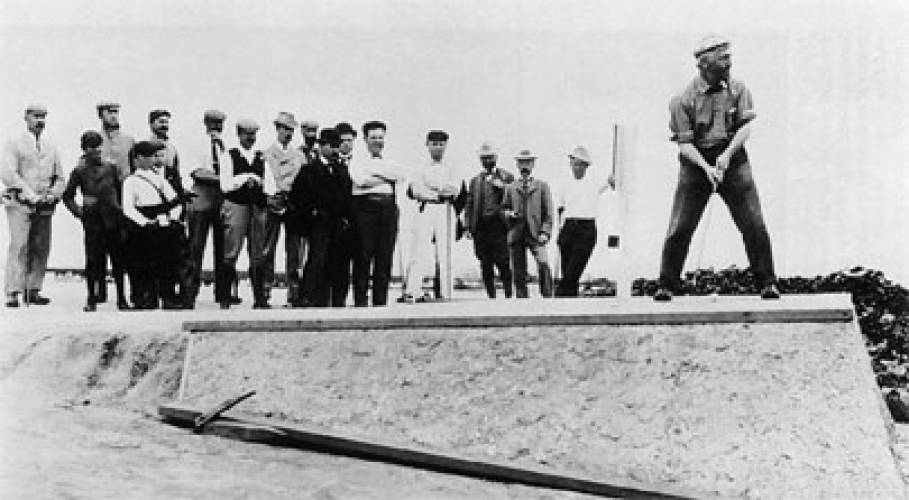
With a population of 85,000 in 1897, it seems strange that Los Angeles had not yet been bitten by the golfing but that was about to change. One of those with whom Grindlay often played was a Santa Monica sporting goods merchant and tennis enthusiast named Edward B. Tufts and, after Grindlay threatened to leave Southern California if a better course wasn't built, Grindlay, Tufts and two of Grindlay's pupils, Hugh W. Vail and E. Conde Jones, organized a voluntary organization, The Los Angeles Golf Club, in December, 1897.
The four men leased a 16-acre parcel at the corner of Pico and Alvarado which had the dual advantage of being close to two trolley lines and also to the fashionable West Adams district, where many well-to-do people resided. In a mere five days, a nine-hole, 1,913-yard course was laid out and built, with the four men using picks, shovels and rakes to clear debris and construct the holes.
The course became known as "The Windmill Links" because of a burned-out windmill, 12 feet by 16 feet at its base, which served as the club's first clubhouse. Like all virtually all courses at the time, the greens were made of oiled sand (they were often called "skins" which may account for the name of the popular game) and each was 22 1/2 feet in diameter. "With Grindlay supervising," writes Robert Windeler in The Los Angeles CC's centennial book, "Tufts and Jones reamed out the holes with butcher knives and sank newly emptied tomato cans, six inches across by six inches high, as cups in the exact center of each green."
Grindlay would later written in "Golf": The ground was as hard as the best macadam, very rough and covered with short, wiry, dried-up and altogether un-putt-over-able burr clover. In a country where it rains in a deluge three or four times a year and not at all the rest of the time, turf greens were obviously impossible. . . " (Grindlay had obviously not been to the Coronado Golf Club in San Diego, which apparently did have turf greens).
In addition to the founding quartet, the club's organizers included Joseph F. Sartori, who was president of the Security Savings Bank. He wrote to friends, urging them to join, noting, "We need shovels and things to fix up the greens, so we're obliged to charge you $5.00 to enter our club." Women were offered memberships in the club "with full privileges" for just $2.50.
The club grew rapidly. Harry Grindlay, Walter's brother, became the club's first full-time employee -- "trainer and groundskeeper" -- for a salary of $5 per day and later defeated W.H. Way (known as Bertie of Willie) of the Pasadena Country Club in Southern California's first professional golf match that winter.
But the popularity of the club and of the game itself soon made the "Windmill Links" overcrowded and Tufts and Sartori found land 1 1/2 miles farther west on Pico behind a brick convent in an area knows as "Pico Heights." On September 9, 1898, "The Convent Links" -- slightly longer (2,008 yards) and much more difficult (adding as many as 20 strokes to players scores for 18 holes) -- opened for play. A month later, the club incorporated as The Los Angeles Country Club.
But even this new facility could not keep up with the popularity and so, once again, Sartori and Tufts went in search of new property, further west. They didn't have to journey far. On the corner of what is now Pico and Western Ave., they found a tract of land on which the club could build an 18-hole course. When it was finished in Sept., 1899, The Los Angeles CC had either the first or second 18-hole course west of Chicago (depending on which article you read).
The growth pattern continued and by 1908, LACC had 508 members. So, for the third and final time, the club moved west, this time to its present Wilshire Boulevard location in Beverly Hills. There they constructed a 6,496-yard course that would eventually be replaced by the current layout, designed by George Thomas more than a decade later.
Chapter Three -- Founding the SCGA
It may have taken many years for golf to take hold in Southern California, but once established the game grew rapidly in popularity. Not everyone was pleased with this new sport. When the Rev. E.F. Goff, pastor of the First Congregational Church of Riverside, spoke to a large audience at the opera house on "Amusement and Recreation," he took the occasion to denounce the playing of golf and billiards on Sundays, expressing the hope that "Christian sentiment would pronounce itself so strongly that the click of golf and billiard balls will never again be heard in Riverside on Sunday."
But the good pastor was in a minority. As more clubs were being formed and more tournaments and events held each month, it became apparent that some sort of umbrella organization need to be founded to adjudicate disputes and maintain some semblance of overall order and consistency in the increasingly popular sport.
On July 29, 1899, representatives from five clubs -Los Angeles, Pasadena, Redlands, Riverside Polo & Golf and Santa Monica -- met in Joseph Sartori's office at Security Bank in downtown Los Angeles and drafted a constitution and bylaws drafted by Sartori, who had obviously read the USGA bylaws and adopted similar wording.
"The object of this association," says Article II of the SCGA constitution, "shall be to promote interest in the game of golf; the protection of the mutual interest of its members; to establish and enforce uniformity in the rules of the game by creating a representative authority, its executive committee, to be a Court of Reference as a final authority in matters of controversy; to establish a uniform system of handicapping; to decide on what links the amateur, open and ladies' championships of Southern California, and such other championships, as may be decided upon by the executive committee, shall be played."
Charles E. Maud of Riverside was elected the first president of the SCGA and J.B. Miller of Pasadena was elected vice-president. Sartori was named secretary, while Tufts and R.D. Osborne (another member of Riverside Polo and Golf Club) were elected to the executive committee. At a subsequent meeting, Tufts was chosen as the association's "official handicapper," a task he would continue until his death.
Historical Note: Grand Hotel, Of Course
Chapter Four -- Innovative Moves
From its inception, the SCGA set in motion a series of actions that would have far-reaching consequences.
One of those was the SCGA Amateur Championship, which was first conducted February 21-23, 1900, at the "Convent Links" of The Los Angeles Country Club. After a rain delay, 29 golfers began the event Charles E. Orr of Pasadena CC defeated Charles E. Maud of Riverside, 6 & 4, in the championship match (see separate listings for other winners). It was the first of what would be 99 consecutive years in which this event has been held; only the Utah State Amateur (which began in 1899) has a longer unbroken string of championships.
The first 20 years were also notable for two multiple winners. Walter Fairbanks became the first three-time winner when he captured the 1901, 1903 and 1905 SCGA Amateur, a feat which was matched by Paul Hunter (see separate story) who became the first back-to-back winner in 1908-09. Hunter would win three more titles in the 1920s, making him the only five-time champion in the event's history.
While the SCGA Amateur has been held every year, the Southern California Open and the Ladies championship were held more sporadically. The Open was held for 10 years and then appeared off and on, while the women's amateur was often not held each year, although various clubs continue to hold major women's tournaments.
The second move was to solidify the Team Match program which had been held informally between clubs for several years previous to the SCGA's inception. On Jan. 27-27, Los Angeles, Riverside, Pasadena and Catalina met in the first SCGA Team Matches (Redlands was supposed to play but newspaper accounts don't indicate that it did). In the four-man team competition, Los Angeles won with 19 team points; Pasadena was second with 15.
Why Catalina? The answer lies in the third -- and perhaps most important -- decision taken by the newly formed association.
With the number of hotel-type golf facilities equalling or exceeding the number of what today would be called private clubs, the SCGA created two types of membership categories: "associate," which was for golf clubs, and "allied," which was for hotel courses. In doing so, the association's founders put the association on record as being interested in the clubs that served both the public and private sectors.
Thus, on November 3, 1899, Coronado Golf Club and Hemet Golf Club (a.k.a. as the Cactus Golf Club) -- both of which were affiliated with hotels (the Hotel del Coronado and the Hemet Hotel) -- became the sixth and seventh clubs admitted to SCGA membership, followed a month later by four others: Santa Catalina, Hotel Green and Rubideaux, all of which were admitted as allied members) and Pachappa GC in Riverside, which was an associate member.
Historical Note: The SCGA Amateur Championship
Chapter Five -- Growth
Golf courses were springing up throughout Southern California, some of which lasted only a few years and others of which exists today.
San Diego
Considering that San Diego is now one of this country's thriving golf meccas, its beginnings were anything but robust. The city's first course (which would eventually become the home of the San Diego Country Club) was built on part of what is now Balboa Park in 1897, a nine-hole course with dirt fairways and sand greens. It stayed at that location until 1913 when city fathers evicted it to make way for the 1915 Panama-California Exposition.
Meanwhile across the bay in Coronado, a nine-hole course was constructed before the turn of the century and in 1901, a more luxurious, 18-hole facility was built to be used by members and guests of the Hotel del Coronado (see Grand Hotel, Of Course).
In 1912, A.G. Spalding (founder of Spalding Sporting Goods) built the Pt. Loma Golf Club on the bluffs overlooking San Diego Bay. That course became home to the San Diego Country Club until 1921 when it moved to its present location in Chula Vista.
Meanwhile, after the Panama-California Exposition, the Balboa Park Municipal Golf Course was constructed, with 18 holes again consisting of dirt fairways and sand greens, located approximately in the same place where it exists today. It took until 1931 for the fairways and greens to be seeded with grass.
Orange County
On December 7, 1899 (a date which doesn't live in infamy), a group gathered at the Sunset Club in Santa Ana for the purpose of organizing the Santiago Golf Club and introducing "the health-giving and pleasure-giving game of golf," to quote an article from the Santa Ana Blade. They leased land from James Irvine near Peters Canyon and with hoes, shovels and rakes hacked out a nine-hole course. The club later became Orange County Country Club before evolving into Santa Ana Country Club.
George Shattuck, who later would become president of Santa Ana CC, recalls, "It was a nine-hole course, picturesque, too, but too far from town. In those days most everybody traveled by horse and buggy and the old-timers soon got tired of the long hauls."
San Gabriel Valley
Not everyone traveled by horse and buggy. Railroads and the rapidly expanding light-rail (or trolley) systems being laid down by Henry Huntington and others were magnets for two new courses in the San Gabriel Valley: Annandale Golf Club and San Gabriel (Valley) CC.
Huntington (nephew of railroad magnate Collis P. Huntington) began his rise to prominence by acquiring the Los Angeles Railway Company in 1898. Three years later, the Pacific Electric Railway Company was begun and would eventually lay down thousands of miles of light-rail tracks throughout Southern California. The Pacific Electric's expansion opened up the Arroyo Seco area and in 1905, a Los Angeles Times story, headlined "Golf Club of Millionaires," announced that Huntington had purchased 320 acres of the Campbell-Johnston Ranch in what was known as San Rafael Heights to build the area's first major golf course subdivision.
The nickname "millionaires golf club" was no joke. The plans included spending $10,000 on the course and an equal amount on a clubhouse, plus an additional $25,000 on the infrastructure, which included transportation by the Pacific Electric Short Line Railroad between Los Angeles, Pasadena and Mount Lowe. Many of the members were coming from the Pasadena Country Club because, as Annandale's 75th anniversary book notes, "they were interested in developing a club that would be primarily devoted to the game of golf, rather than to social activities."
When Annandale was completed in 1907, it was one of the first 18-hole courses in Southern California and one of the longest, at 6,105 yards. The designers included William Watson, a well-known Scottish golf course architect and creator of The Olympic Club in San Francisco, and C.E. Orr, the first SCGA Amateur champion.
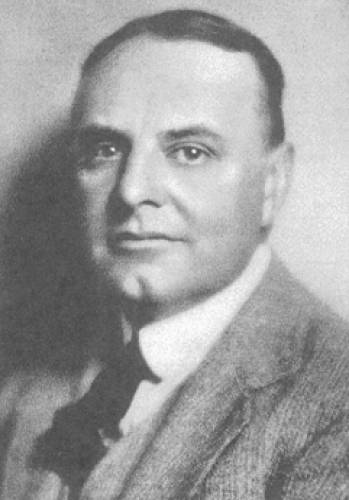 The course was rebuilt in 1909, lengthening it to 6,355 yards (a monster by standards of that day) and seeding it with Australian Bermudagrass. A new type of hazard, numerous gigantic conical mounds called "beehives," were added, usually installed in staggered double rows. The course was rebuilt again in 1919, under Watson's supervision; the grading and construction of new bunkers was in charge of William P. Bell, who had begun his career as caddy-master at Annandale in 1911, and would later go on to become one of the nation's premiere golf course architects.
The course was rebuilt in 1909, lengthening it to 6,355 yards (a monster by standards of that day) and seeding it with Australian Bermudagrass. A new type of hazard, numerous gigantic conical mounds called "beehives," were added, usually installed in staggered double rows. The course was rebuilt again in 1919, under Watson's supervision; the grading and construction of new bunkers was in charge of William P. Bell, who had begun his career as caddy-master at Annandale in 1911, and would later go on to become one of the nation's premiere golf course architects.
San Gabriel Country Club also owes its existence, in part, to the Pacific Electric Railway for the "Big Red Cars" ran virtually to the club's entrance. In 1904, the club (which was then called San Gabriel Valley Country Club) built a nine-hole course, designed by Norman Macbeth, on land that had originally been part of the San Gabriel Mission (Mission Bells are a familiar trademark at the club). Nine years later, Macbeth added another nine holes as were many of the great oak trees that line the course today.
And, finally, there was Midwick Country Club, located on the border of what is now Alhambra and Monterey Park. From its inception in 1912, Midwick was considered to be a championship course -- no surprise, since it was designed by Macbeth, who was one of the SCGA's premiere golfers. Midwick (pronounced Middick) hosted the SCGA Amateur in 1915 (when it was one by a club member, E.S. Armstrong), hosted the tournament again in 1917, and then hosted it three times in an eight-year period, beginning in 1923.
Santa Barbara
Although the Santa Barbara Country Club was reportedly organized in 1894, what golf there was consisted of three or four holes near the Biltmore Hotel. After several aborted attempts, hotelman Milo Potter constructed a nine-hole course in 1909 which was primarily for hotel guests. The original Santa Barbara Country Club eventually moved to its present location and was renamed Montecito Country Club in 1913.
The Potter CC failed after only a few years and eventually another club, known as Hope Ranch CC and then as La Cumbre CC, was organized in 1914. It would be several years later before its course would be constructed.
Chapter Six -- Toward the Roaring Twenties
The impending onset of World War I led to a slowdown in golf course construction during the latter part of the second decade of the 20th century. Part of that downturn was, no doubt, due also to the fact that vacation travel was curtailed during hostilities.
However, on the horizon was the founding of Wilshire Country Club and the 1920s, which would become a "golden age" for both golf course construction and for great amateur players in the region as well.
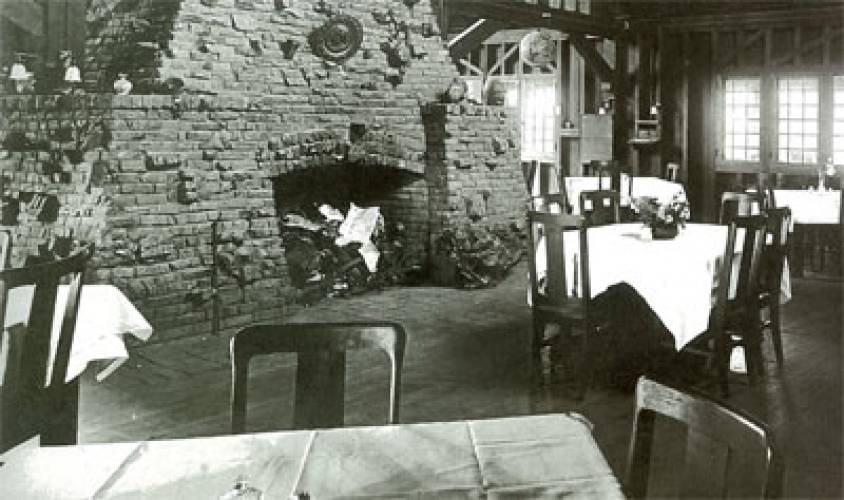
In the January/February issue: Two great golf course architects -- George Thomas (Los Angeles, Bel Air, Riviera, Ojai Valley Inn and Palos Verdes) and Max Behr (Hacienda, Lakeside, Oakmont, Rancho Santa Fe) -- make their marks in Southern California. It's indeed a golden age -- until the Great Depression strikes. It's also an era where many of the nation's greatest amateur golfers, including George Von Elm, Charley Seaver and Roger Kelly, came from Southern California. Finally, Hollywood discovers the joys of golf during the 1930's.
